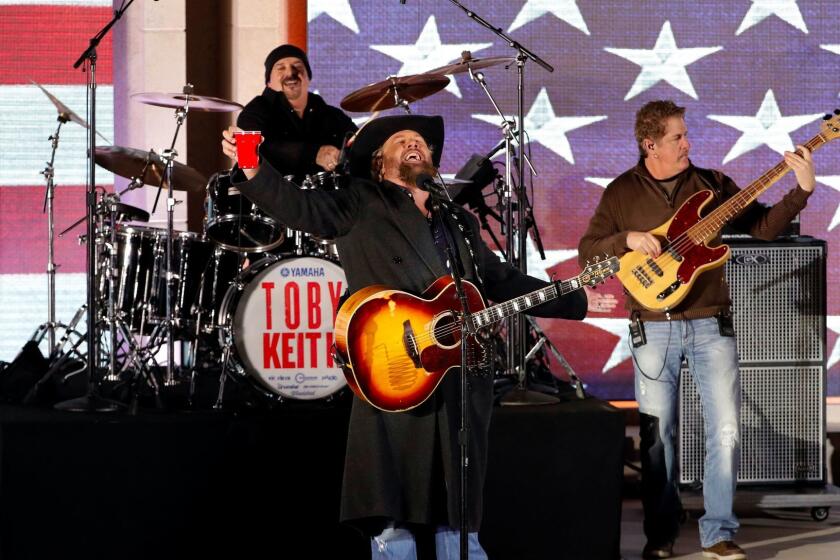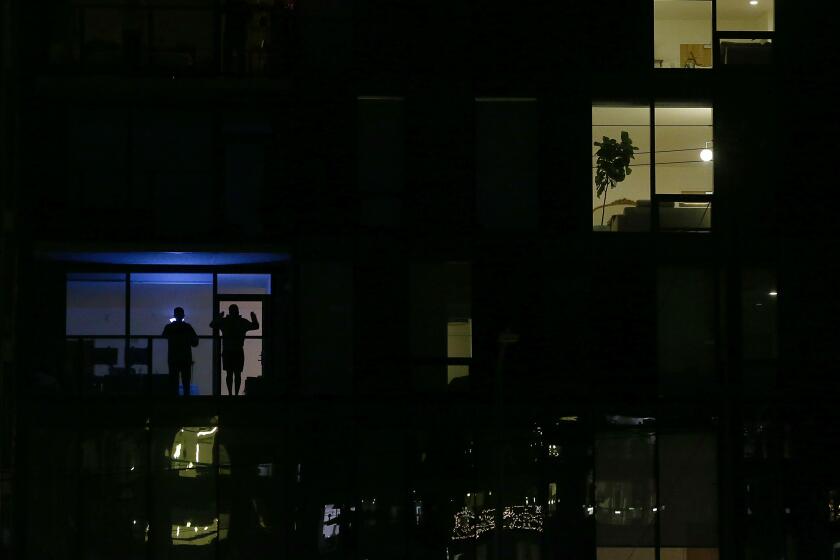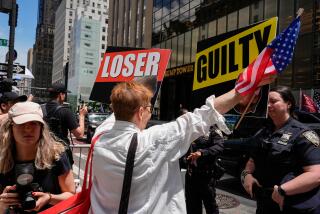Commentary: Times are bad, so keep your uplift. Give me âCrime and Punishmentâ and âThe Godfatherâ
Thereâs an assumption in certain artistic circles that when the theaters reopen, audiences are going to want to be uplifted. Light comedy, soothing song, maybe a tear or two of reconciliation, but nothing too dark or challenging after a pandemic that lasted more than a year and a political crisis that has gone on far longer than that.
I disagree. While other people were turning to âWonder Woman 1984â and Christmas hokum during the holidays, I found comfort in Fyodor Dostoevskyâs âCrime and Punishmentâ and the first two âGodfatherâ films.
This wasnât an act of perversion. Iâm actually quite a festive person. My Christmas tree was aglow each night, my cupboards were stocked with caloric delicacies and my disappointment with not being able to visit family and friends in New York was snugly assuaged by the comfort of being home.
The world just seemed too bollixed up for superficial entertainment. I craved darker illumination. With the news spiraling out of control, I was tired of pretending that everything was âunprecedented,â that the malignant behavior of politicians was ânot who we areâ and that the happy ending of justice was just a matter of time. I wanted the truth, even if it left me feeling unconsoled and morally bereft.
I started âCrime and Punishmentâ with some wariness. I had read the book in high school and, because it sparked a lifelong passion for literary fiction, I was afraid that the adult critic I had grown up to be might tear apart an important teenage memory.
I was aware of Vladimir Nabokovâs disdain for âCrime and Punishmentâ and Anton Chekhovâs impatience with Dostoevskyâs âlong-windedâ and âindelicateâ prose. Would I now also find the psychology pretentious, the writing bombastic and the religious sentiment overwrought?
While heâs being impeached, President Trump gives the National Medal of Arts to Toby Keith and Ricky Skaggs. What is this award, and who typically gets it?
Whatever reservations I had about the novelâs stylistic lapses were no impediment to my becoming completely engrossed again. The story of a bright young man, mired in poverty and wallowing in alienation, who rationalizes murder and then has to live with the consequences, is a perfect web for capturing the adolescent imagination.
What fascinated me more in middle age was the unsparing depiction of evil as an endemic social problem. Dostoevsky doesnât soft-pedal the predatory nature of human beings. Cruelty, greed and violence are as much a part of his realism as hunger, squalid living conditions and tuberculosis.
Unlike the crime thrillers favored by Hollywood, thereâs nothing gratuitous in Dostoevskyâs rendering of human depravity and suffering. The harshness, while extreme, sheds light on defects and vulnerabilities in our nature â those moral glitches that are exacerbated by unfair social conditions but not fully explained by them.
Raskolnikov, a university dropout living in a depressing garret with few options of rescuing himself from a life beneath his capabilities, commits murder in âCrime and Punishmentâ partly as a philosophical experiment. Why should a superior man be forced to play by the rules in a society in which the deck is stacked against him?
In killing the old miserly pawnbroker for money, Raskolnikov seeks to purchase his freedom from an existence of degradation. Dostoevsky dramatizes the feverish development and aftermath of this line of distorted thinking. But he situates the protagonist in the stratified landscape of 19th century St. Petersburg, Russia, where daughters from families with no means are forced into prostitution to provide food for their loved ones and comparatively wealthy men prey on them for sport. Where the sick are turned out on the street, and sympathy tends to arrive a moment too late.
The 2013 multimedia stage version of George Orwellâs novel â1984,â which has been adapted many times, is being developed as a five-part limited series.
Before Raskolnikov kills the pawnbroker and her unfortunate sister, he has a terrifying dream, in which heâs back in his childhood walking with his father toward a cemetery. Revelers are spilling out of a raucous tavern. A drunken peasant invites the crowd to jump into his cart for a ride. The cart is led by a puny old gray horse unable to carry the weight. The horse is whipped savagely by the owner, who exhorts bystanders to join in: âOn the muzzle, on the eyes, lash her on the eyes.â
The dream reveals Raskolnikovâs divided nature. As the soon-to-be murderer, he is the owner stomping out the life of the helpless nag, but heâs also the young boy who feels such pity for the abused animal that he rushes at the peasant with his little fists. The horse has been interpreted as âMother Russia,â but the symbol also could be read as nature or life in all its exhausted vulnerability.
âCrime and Punishmentâ employs melodrama for suspense, but it subverts one of the key features of the form â the neat division between good and evil. Dostoevsky flirts with such stereotyping, employing a cast of characters that would be instantly recognizable to a 19th century readership. But even the most egregious mustache-twirling villain in the novel grows more complicated, less predictable.
Evil in âCrime and Punishmentâ is a problem that is never resolved. Repentance, if it arrives, is dearly bought and never completed. Although guilt and innocence are influenced by historical patterns of inequality, no one can claim a monopoly on either. Selfishness isnât the exclusive property of one class or political party or identity category. Human experience isnât so conveniently organized.
The temptation to simplify morality when social injustice is rife is understandable, but reading Dostoevsky makes me impatient with the schematic bent of our age. To be fully human is to acknowledge, as Prospero puts in âThe Tempest,â âthis thing of darknessâ as our own.
As I write this, the House of Representatives has just voted to impeach President Trump for a second time. The charge is incitement of insurrection, and the images from last weekâs storming of the Capitol by a violent mob are running through my head as I advocate for a theater thatâs unafraid of darker truths.
I missed much of the congressional speechmaking, but while running an errand I caught two Republicans on the radio defending Trump in a way that brought to mind a famous passage in âCrime and Punishment,â in which Razumikhin, Raskolnikovâs loyal friend, complains about the path of the murder investigation:
Because you know what irks me the most about it? Not that theyâre lying; lying can always be forgiven; lying is a fine thing because it leads to the truth. No, what irks me is that they lie and then worship their own lies.
Of course at this point Razumikhin doesnât know about his friendâs guilt, adding another layer of irony to a novel thatâs committed to keeping us morally unsettled. That is the state in which I watched âThe Godfatherâ and âThe Godfather Part II.â Not having experienced Francis Ford Coppolaâs epic masterpiece in a couple of decades, I now see that it has provided the dominant myth of American life for the last 50 years.
The Greeks had the Trojan war, the Elizabethans had the Wars of the Roses and weâve had the chronicles of the Corleone clan, a crime family that has served as a resonant metaphor for an America in which the dream of money and power dictates its own logic and morality. What distinguishes the first two âGodfatherâ films (I havenât yet watched âPart IIIâ) from the myriad other gangster movies is the Shakespearean scope of the storytelling.
Mining from Mario Puzoâs novel, Coppola creates a canvas that connects the tragedy of character to the tragedy of a nation that wants to believe in its ideals even as it rewards those who violate them. Nothing that Iâve seen in the last four years has shed as much light on Trumpâs twice-impeached presidency as these two films from the 1970s.
The reality TV show aspect of contemporary politics has distracted us enough. As a culture, weâve been âamusing ourselves to death,â to borrow the title of Neil Postmanâs 1985 book about the fate of public discourse in an age of television commodification â an almost quaint notion by todayâs souped-up social media standards.
Art has a responsibility to equip us for the challenge of being human. Escapism has its place, but considering the state of affairs, thereâs more urgent work to do. Tales of crime and punishment may seem as remote from everyday life as empty-headed musicals. But as the ancient tragedians understood, universal patterns become more visible in extremity when sensationalism is resisted for starker truths.
In Sigrid Nunezâs âWhat Are You Going Through,â the last book I read in 2020, the narrator (a writer helping her dying friend end her life) remarks, âNo matter how sad, a beautifully told story lifts you up.â Letâs hope that this will be the measure by which artistic directors seek to uplift us when we can gather again in a theater for a glimpse at our not always flattering reflections.
Some people look for comfort reads in isolation; David Ulin finds deeper solace in stories of struggle by Faulkner, Jenny Diski and Natalia Ginzburg.
More to Read
The biggest entertainment stories
Get our big stories about Hollywood, film, television, music, arts, culture and more right in your inbox as soon as they publish.
You may occasionally receive promotional content from the Los Angeles Times.













